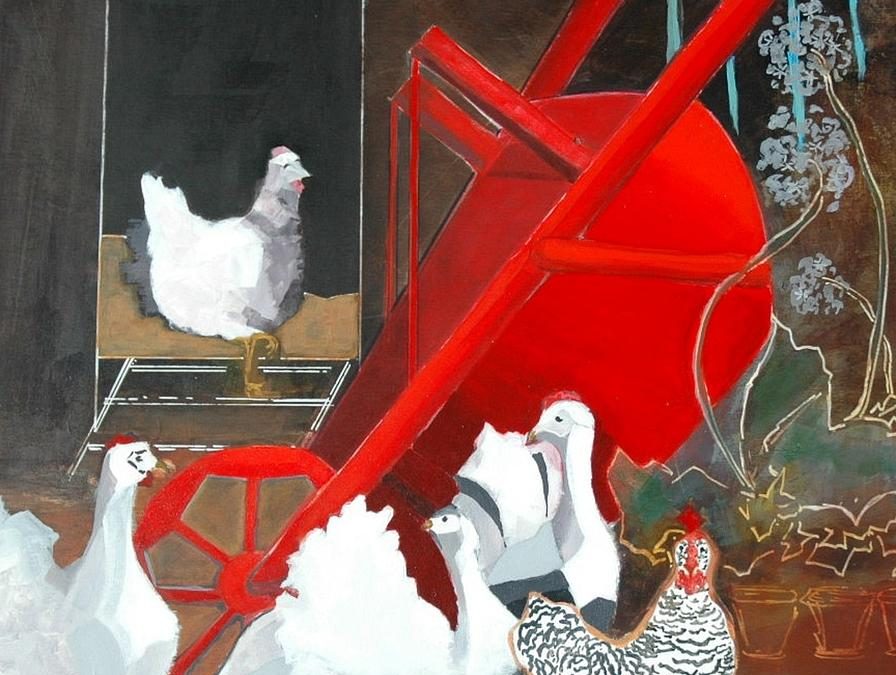Beginning at a young age, I would sit in Language Arts class, listening to the lectures regarding symbolism, hyperbole, metaphor, extended metaphor, you name it. And while the importance of these literary elements should be emphasized and taught at a young age, I’ve found that there does seem to be an issue with how these elements are taught within poetry. It’s all about the “language,” not enough about the “art.”
In the 7th grade, we were asked (and expected to answer) questions like “What is the meaning of the Raven?” in our Edgar Allen Poe unit, rather than being asked, “What does the Raven mean to you?” We were told what the color red in the Red Wheelbarrow symbolized, rather than inspect the author’s life at the time of the poem’s publication, to attempt to understand why and what he was writing about. Doing so can not only allow the reader to gain some insight into what the poem may have meant for the poet, but what it can (and has the ability to) mean for the reader. For this purpose, while there will always be classic and timeless pieces of poetry, I believe it’s crucial that schools include modern work that may closer relate to the language and topics in students’ lives today. Doing so not only shows the growth of poetry through time (and that it is not in fact, a dying art), but helps students discover something that may be relevant and therefore comprehensible to their education and life.
For National Poetry Month, poets.com asked teachers how they teach poetry. One response from Tracy Adrian, a high school teacher from Guatemala, truly resonated with me. She said, “I do not prepare questions. I do not make them parse the poetry. We simply enjoy it… I want to teach them to read poetry, not just to analyze it.”
Though questions can be an excellent segue into thought-provoking conversation, they can also limit the students’ ideas. In terms of The Raven, one should not ask, “What is the meaning of the writing desk?” but rather, the student should be allowed to contemplate what the writing desk would have meant for them had they been writing the poem.
You see, poetry is an art, and a fragile and unappreciated one at that, and so it should be treated as so. It should not be put into a box, shaped to fit the confines of a lesson or topic, no. It should simply be stated, and the meaning of each poem should be able to resonate with each reader in the way that they need it to. Not everyone is going to look at the same cloud and see the same shape, not everyone will listen to the same song and pull from it a similar meaning. Nor should that be taught to happen.
Art serves a purpose no doubt, but I would argue that it does not need to be given one.
Meet the blogger:
 LIV KRESSLER is a student in her final year at Hamline University, studying creative writing and digital media arts. She enjoys reading all genres, but focuses her writing on creative non-fiction and poetry. Post-graduation, she hopes to remain in the cities and utilize both of her degrees. She enjoys being active, and is a member of Hamline’s track and field team, as well as a former member of the gymnastics team. In her free time, she enjoys outdoor activities, cleaning, crafts, making coffee, and writing. When she’s not at school, she loves heading home to Chanhassen, MN to spend time her with parents and brother.
LIV KRESSLER is a student in her final year at Hamline University, studying creative writing and digital media arts. She enjoys reading all genres, but focuses her writing on creative non-fiction and poetry. Post-graduation, she hopes to remain in the cities and utilize both of her degrees. She enjoys being active, and is a member of Hamline’s track and field team, as well as a former member of the gymnastics team. In her free time, she enjoys outdoor activities, cleaning, crafts, making coffee, and writing. When she’s not at school, she loves heading home to Chanhassen, MN to spend time her with parents and brother.


